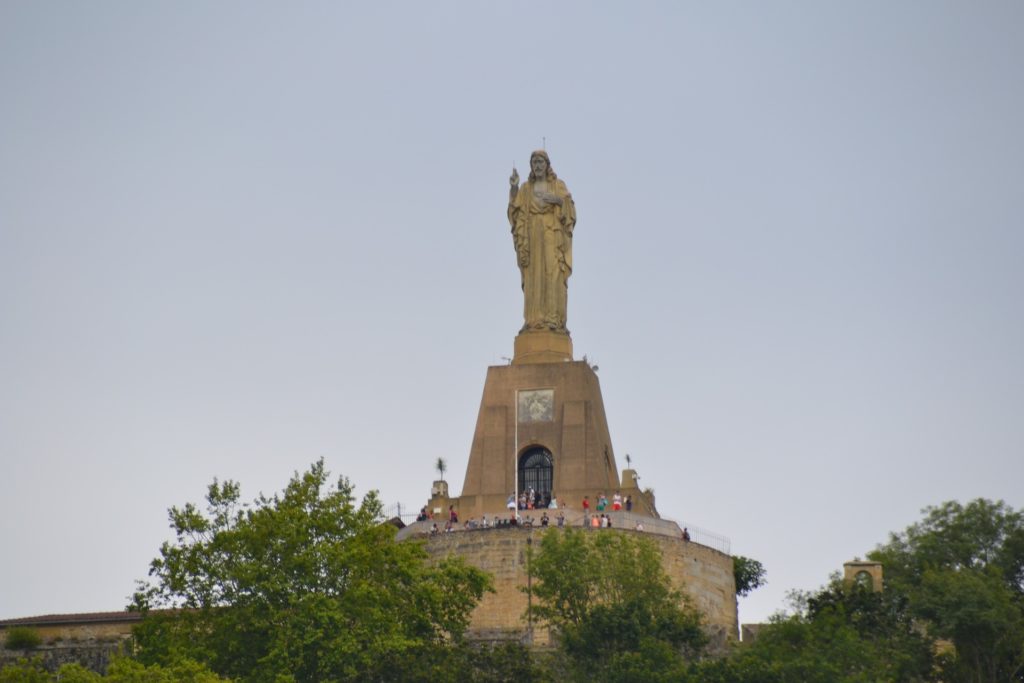The video background on the homepage of this website is drone footage of the city of Donostia-San Sebastián in Spain. It it taken from the top of Monte Urgull and juxtaposes a statue of Jesus that is on the top of a fort against the city to the south and east. It is just this kind of imagery that is important for people to see and understand as they are introduced to mission work in the developed world in general, and the continent of Europe in particular.
We will use Donostia-San Sebastián as an example of just how complex the spiritual situation is in Europe. The Basque region of Spain could be defined as “post-Christian,” with the population largely having assumed values and beliefs that would not be associated with historical Christianity and as a result has drifted from the faith (or at least the civil religion) that was practiced for centuries in the region.
How did that happen?
There are many factors to be considered as one seeks to answer that question. Like the rest of the Western world, since the Enlightenment there has been a steady drift away from Christian faith and move toward a more humanistic and secular approach to life and practice. But in addition to that general trend in Western society, there are national, regional, and even local factors that have contributed to the drift.
From 1936-1939 Spain was in the midst of a bloody civil war. When it was all over, Francisco Franco, the general of the Nationalist faction in the war, emerged as the leader of Spain. He proceeded to rule as dictator until his death in 1975. His project while in power was twofold: to make Spain Spanish, and to make Spain Catholic. The first he sought to do by outlawing the regional languages and any expressions of the regional and ethnic cultures. He accomplished the second through a favored status that he received from the Catholic Church that supported him as a defender of the Church. He vested the Church and the priests with greater legal influence in the affairs of the people, and used that institution to force people to behave as he saw fit. When these priests learned of people doing things that Franco had forbidden (e.g., speaking a regional language), they reported it to the central government, who then responded by either prosecuting or persecuting those who went against Franco’s mandates. This was especially the case among the minorities with different cultural heritages, like the Basques and the Catalans. This situation, along with the the forced practice of state Catholicism, created a deep distrust of organized religion in general, and the of Catholic Church in particular.
Now, 45 years after Franco’s death, and after 40 years as a Western democracy, Spain continues to struggle with the ghosts of the last century, having never put closure on the events of the Civil War and Franco’s dictatorship. A policy of “Amnesty and Amnesia,” essentially a sweeping under the rug of those issues too difficult to deal with, haunts Spain to this day. And this brings us back to the statue of Jesus in San Sebastián. One of the fascinating things about the statue is how little sentimental value that particular piece of art has compared to other works in the city. There is pride in huge modern art fixtures and historic architecture throughout the city. Even the painted wrought iron railing on the promenade is more highly esteemed than the statue. But that is because the statue was erected during the Franco era (it was completed in 1950) and as such has the stain of his rule on it. In 2021, the municipal government of San Sebastián accepted the petition of a group of Basque citizens to change the way in which the statue is spoken about, and how it will be presented to tourists who visit the site. It will now have prominently and conspicuously presented the history of its Francoist origins and all the evils associated with that.
I am not in any way making a judgment on the merits of this decision of the San Sebastián government. I only want to show that even a statue of Jesus, in a region with a long history of Christianity, has become a symbol of political and social conflict in all the wrong ways. And while this is the particular story of the situation in the Basque Country, similar stories can be found throughout Europe. Every country has its story, every people its baggage.
But there is hope! The gospel message is for everyone, even for those who have long forgotten or abandoned that message. Now is the time to mobilize, to live those transformed lives that God has called us to so that even these will be counted among God’s people.

